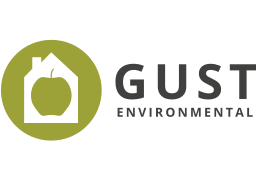What is Building Biology?
Creating Safe Havens in a Toxic, Electromagnetic World
 The Challenge
The Challenge
Illnesses and ailments are on the rise. Everyone knows someone who has cancer, depression, sleeping disorders, etc., etc. Allergies have increased; allergists claim 50% of illness is caused or worsened by indoor pollution. Asthma has doubled since 1980, most heavily for kids, while chemical sensitivity has grown to 18% of the population. A troubling portion of the population (estimated at 3-10%) is suffering from electromagnetic hyper-sensitivity and the number of sufferers is rapidly increasing.
We know that if we eat right & think right, and exercise we will have better health and be more resistant to disease. However, we are missing something in this equation. We spend over 90% of our time indoors, and according to EPA, 65% our buildings are polluted by chemical and/or mold. Additionally, we have in the last 15 years compounded the health effects by purposely polluting homes and buildings with man-made electromagnetic radiation (EMR). Principle among these energies are pulsed radio frequency radiations (wifi, cordless phone, cell phone, entertainment system components, games) that were demonstrated at least 30 years ago to be more biologically active than older forms of EMR. Our buildings (homes and offices) are making us sick.
The Good News
Since the 1970’s, beginning in Germany, Building Biology (Bau-biologie) has studied the relationship between buildings and human health. It is the purpose of Building Biology and the Building Biology Consultant to apply this wealth of specialized knowledge to construction, or remediation, of homes and workplaces.
Building Biologists like Lawrence Gust, are certified by the for Building Biology™ Institute in Clearwater, Florida.
The 25 Principles of Building Biology
Site and Community Design
- Verify that the site is free of naturally occurring health hazards.
- Place dwellings so occupants are undisturbed by sources of man-made air, soil, water, noise and electro-pollution.
- Place dwellings in well-planned communities that provide ample access to fresh air, sunshine and nature.
- Plan homes and developments considering the needs of community, families and individuals of all ages.
Occupant Health and Well-Being
- Use natural and unadulterated building materials.
- Allow natural self-regulation of indoor air humidity using hygroscopic (humidity buffering) building materials.
- Assure low total moisture content and rapid desiccation of wet construction processes in new buildings.
- Design for a climatically appropriate balance between thermal insulation and thermal storage capacity.
- Plan for climatically appropriate surface and air temperature.
- Provide for ample ventilation.
- Use appropriate thermal radiation strategies for heating buildings including passive solar wherever viable.
- Provide an abundance of well-balanced natural light and illumination while using color in accordance with nature.
- Provide adequate acoustical protection from harmful noise and vibration.
- Utilize non-toxic building materials that have neutral or pleasant natural scents.
- Use appropriate water and moisture exclusion techniques to prevent interior growth of fungi, bacteria, dust and allergens.
- Assure best possible potable water quality by applying purification technologies if required.
- Utilize physiological and ergonomic knowledge in interior and furniture design.
- Consider proportion, harmonic measure, order and shape in design.
Natural and Man-Made Electro-Magnetic Radiation Safety
- Minimize indoor interference with vital cosmic and terrestrial radiation and preserve the natural beneficial DC electric field (air ionization) and the DC magnetic field.
- Minimize man-made power system and radio frequency radiation exposure generated from within the building and from outside sources.
- Avoid use of building materials that have elevated radioactivity levels.
Environmental Protection, Social Responsibility and Energy Efficiency
- Construction materials production and building processes shall provide for health and social well-being in every phase of the building’s life-cycle.
- Avoid the use of building materials that deplete irreplaceable natural resources or are being harvested in an unsustainable manner.
- Minimize energy consumption throughout the life of the building utilizing climate-based and energy efficient design, energy and water saving technologies and renewable energy.
- Consider the embodied energy and environmental life cycle costs when choosing all materials used in construction.
By: Paula Baker-Laporte, Christopher Bell, Lawrence Gust, Spark Burmaster for the Building Biology® & Institute
The Building Biology North American Conference



